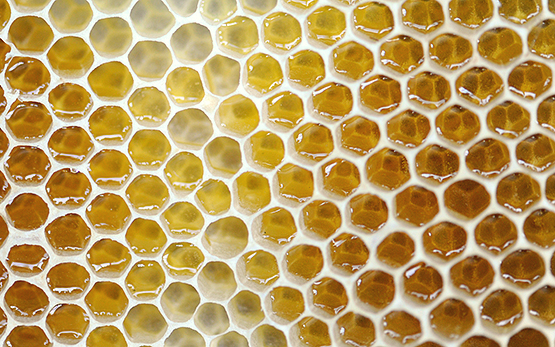Der Wassergehalt des von den Pflanzen produzierten Nektars kann variieren. Um seine Konservierung in den Waben zu gewährleisten, darf er nicht gären. Deshalb wird er von den Bienen in Honig umgewandelt, indem sie seinen Wassergehalt senken und folglich den Zuckergehalt erhöhen. Dies verhindert die Entwicklung der Mikroorganismen. In der Dunkelheit des Bienenstocks ist es schwierig, den Herstellungsprozess des Honigs zu beobachten. Aus diesem Grund ist er auch nur wenig erforscht. Um die Umwandlung von Nektar in Honig zu untersuchen, haben wir die Technik der Tomographie eingesetzt. Sie ermöglicht es, den Zuckergehalt des eingelagerten Nektars sehr präzise zu messen, ohne den Bienenstock öffnen zu müssen und das Bienenvolk zu stören.

Hassan-Roland Nasser
Dr. Ing.
Groupe de recherche
- 22.00.20.04 Production numérique
ID Agroscope: 21581 Envoyer par e-mail
Hassan-Roland Nasser
Hassan-Roland Nasser
Projets
- 22.11.20.04.02
- 22.11.20.04.01
- 22.11.17.06.03
Hassan-Roland Nasser
Informations supplémentaires
I work as a data scientist in the digital production group and I am part of the DataDrive team. I am involved in several project and I am managing the computer vision coordination project (a SFF11 subprojet).
Data science contains a broad spectrum of activities and it is a challenging field, not only because it comes at the interface of computer science and math, but also because:
- There are a lot of available tools in the market.
- Working in data science involves having some domain knowledge (often different than our domain knowledge of comfort)
- The reproducibility and generalizability of created systems and models
My main function is to mitigate these difficulties in a research context by contributing to data and machine learning aspects in the projects I am contributing to. Here are few examples of the projects I am working on:
- Computer vision coordination project: enable and foster computer vision based projects at agroscope by supporting CV based projects and organizing regular meetings and workshops about the topic.
- Rumex detection using computer vision: in this project, I work on the modelling and the system architecture.
- Smart irrigation using dendrometers signals over LoraWAN: in this project, I work on signal and data analysis and on implementing the backend routine for automation.
- Rhythmicity as welfare indicators for ruminants: I develop algorithms (in the context of the DigiRhythm package) and analyze data.
Google Scholar: https://scholar.google.fr/citations?user=L97ZODwAAAAJ&hl=en
ORCID: https://orcid.org/0000-0003-1821-3234
Linkedin: https://www.linkedin.com/in/nasserha
DigiRhythm Libray: https://cran.r-project.org/web/packages/digiRhythm/index.html
Smart weed control: https://www.agroscope.admin.ch/agroscope/en/home/topics/economics-technology/smart-farming/smart-weed-control.html






